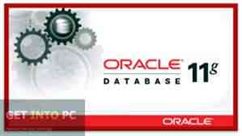Oracle 11g Syllabus And Price List Of Nepal
The advantage of ASP.NET MVC training at Nepalese Training Center. ICT Training Center is the best IT establishment to learn ASP.NET training in Nepal because it offers the following benefits to the students.
Course: Oracle 11g Duration: 8 Weeks Price: Rs. 35000/- Course Outline General Overview
Introduction to database management systems and databases
What are a database and a database management system (DBMS)
Introduction to Oracle and its overall Platform
History and Current trends of DBMS and Database Administration
Tasks of a Database Administrator
Hardware and Software pre-requisites for a successful Oracle 11g installation
Oracle 11g Installation Oracle Database 11g: SQL Fundamentals I Retrieving Data Using the SQL SELECT Statement
List the capabilities of SQL SELECT statements
Execute a necessary SELECT statement Restricting and Sorting Data
Limit the rows that are retrieved by a query
Sort the rows that are retrieved by a query
Use ampersand substitution to restrict and sort output at runtime Using Single-Row Functions to Customize Output
Describe various types of functions available in SQL
Use character, number, and date functions in SELECT statements.
Using Conversion Functions and Conditional Expressions
Describe various types of conversion functions that are available in SQL
Use the TO_CHAR, TO_NUMBER, and TO_DATE conversion functions
Apply conditional expressions in a SELECT statement Reporting Aggregated Data Using the Group Functions
Identify the available group functions
Describe the use of group functions
Group data by using the GROUP BY clause
Include or exclude grouped rows by using the HAVING clause Displaying Data from Multiple Tables
Write SELECT statements to access data from more than one table using equijoins and non-equijoins
Join a table to itself by using a self-join
View the data that generally does not meet a join condition by using outer joins
Generate a Cartesian product of all horizontal lines from two or more tables Using Subqueries to Solve Queries
Define the subqueries
Describe the different types of problems that the subqueries can solve
List the different types of subqueries
Write single row and multiple-row subqueries Using the Set Operators
Describe set operators
Use a set operator to combine multiple queries into a single query
Control the order of rows returned Manipulating Data
Describe each data manipulation language (DML) statement
Insert rows into a table
Update rows in a table
Delete rows from a table
Control transactions
Using DDL Statements to Create and Manage Tables
Categorize the main database objects
Review the table structure
List the data types that are available for columns
Create a simple table
Explain how constraints are created at the time of table creation
Describe how schema objects work Creating Other Schema Objects
Create simple and complex views
Retrieve data from views
Create, maintain, and use sequences
Create and maintain indexes
Create private and public synonyms Oracle Database 11g: Administration I Exploring the Oracle Database Architecture
Explain the Memory Structures
Describe the Process Structures
Overview of Storage Structures Preparing the Database Environment
Identify the tools for Administering an Oracle Database
Plan an Oracle Database installation
Install the Oracle software by using Oracle Universal Installer (OUI) Creating an Oracle Database
Create a database by using the Database Configuration Assistant (DBCA) Managing the Oracle Instance
Setting database initialization parameters
Describe the stages of database startup and shutdown
Using alert log and trace files
Using data dictionary and dynamic performance views
Configuring the Oracle Network Environment
Configure and Manage the Oracle Network
Using the Oracle Shared Server architecture Managing Database Storage Structures
Overview of table space and data files
Create and manage tablespaces
Space management in tablespaces Administering User Security
Create and manage database user accounts
Grant and revoke privileges
Create and manage roles
Create and manage profiles Managing Data and Concurrency
Monitor and resolve locking conflicts Managing Undo Data
Overview of Undo
Transactions and undo data
Managing to undo Implementing Oracle Database Security
Database Security and Principle of Least Privilege
Work with Standard Database Auditing Database Maintenance
Use and manage optimizer statistics
Use and manage Automatic Workload Repository (AWR)
Use advisory framework
Manage Alerts and Thresholds Performance Management
Use Automatic Memory Management
Use Memory Advisors
Troubleshoot invalid and unusable objects
Intelligent Infrastructure Enhancements
Use the Enterprise Manager Support Workbench
Managing Patches Backup and Recovery Concepts
Identify the types of failure that can occur in an Oracle database
Describe ways to tune instance recovery
Identify the importance of checkpoints, redo log files, and archived log files
Overview of the flash recovery area
Configure ARCHIVELOG mode Performing Database Backups
Create consistent database backups
Back up your database without shutting it down
Create incremental backups
Automate database backups
Manage backups, view backup reports and monitor the flash recovery area Performing Database Recovery
Overview of Data Recovery Advisor
Use Data Recovery Advisor to Perform recovery (Control file, Redo log file and Data file) Moving Data
Describe and use methods to move data (Directory objects, SQL*Loader, External Tables) Explain the general architecture of Oracle Data Pump
Use Data Pump Export and Import to move data between Oracle databases Oracle Database 11g: Administration II Database Architecture and ASM
Describe Automatic Storage Management (ASM)
Set up initialization parameter files for ASM and database instances
Start up and shut down ASM instances
Administer ASM disk groups Configuring for Recoverability
Configure multiple archive log file destinations to increase the availability
Define, apply and use a retention policy
Configure the Flash Recovery Area
Use Flash Recovery Area Using the RMAN Recovery Catalog
Identify situations that require RMAN recovery catalog
Create and configure a recovery catalog
Synchronize the recovery catalog
Create and Use RMAN stored scripts
Back up the recovery catalog
Create and use a virtual private catalog Configuring Backup Specifications
Configure backup settings
Allocate channels to use in backing up
Configure backup optimization Using RMAN to Create Backups
Create image file backups
Create a whole database backup
Enable fast incremental backup
Create a duplex backup and back up backup sets
Create an archival backup for long-term retention
Create a multisession, compressed and encrypted backup
Report on and maintain backups Performing User-Managed Backup and Recovery
Recover from a lost TEMP file
Recover from a lost redo log group
Recover from the loss of password file
Perform user-managed complete database recovery
Perform user managed incomplete database recovery
Perform user-managed & server managed backups
Identify the need for a backup mode
Back up & recover a control file Using RMAN to Perform Recovery
Perform full recovery from a critical/noncritical data file loss using RMAN
Perform not complete recovery using RMAN
Recover using incrementally latest backups
Perform automated TSPITR Monitoring & Tuning RMAN
Use the Structure Query Language Access Advisor to tune a workload
Understand Database Replay Space Management
Manage to resume able space allocated
Describe the concepts of transportable tablespaces and databases
Reclaim wasted space from tables and indexes by using the segment shrink functionality Managing Resources
Understand the database resource manager
Create and use Database Resource Manager Components Automating Tasks with the Scheduler
Create a job, program, and schedule
Use a time-based or event-based schedule for executing Scheduler jobs
Create lightweight jobs
Use job chains to perform a series of related tasks Administering the Scheduler
Create Windows and Job Classes
Use advanced Scheduler concepts to prioritize jobs Unique Teaching Methodology
We use a Projector for teaching our courses, and there will be powerpoint slides. As well as teaching with a whiteboard gives our students a traditional classroom-like experience. The instructor writes and draws by freehand on the whiteboard and all our students can see it in real time in the classroom.







